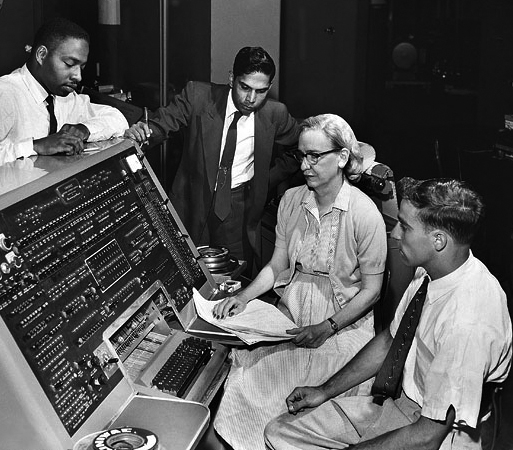
Did you know that computers used to be so big they filled entire rooms?
Imagine having to walk into a massive machine just to send a message or play a game! Join us on a time-travelling adventure through the amazing journey of computers—from room-sized giants to tiny gadgets that fit right in our pockets.
The Giant Computers: Monsters of the 1940s!

A long time ago, in the 1940s, computers weren’t sleek, silver, or small. They were massive, clunky machines that could weigh as much as a car! One of the first computers, called ENIAC, was so big that it needed an entire room just to hold it. People would type commands into ENIAC using punched cards—sort of like little paper keys! But even though it was huge, ENIAC was magical for its time because it could solve maths problems faster than anyone had ever seen.
1980s: Computers Come Home!

Fast forward to the 1980s, when computers shrank down to the size of big boxes that you could actually fit on a desk! These were called “personal computers,” and for the first time, people could have computers at home. Families could type letters, play early games, and explore what computers could do. It was like having a little piece of the future in your own living room!
The World-Wide-Web Adventure Begins!

Then came the 1990s and a fantastic invention called the internet. Now, computers could “talk” to each other across the world! Imagine writing a message and sending it to someone thousands of miles away in seconds.
People could share pictures, stories, and games with each other instantly. This was the beginning of a connected world—right at your fingertips!
The Age of Laptops and Tablets: Tiny Tech Heroes!

Next, computers got even smaller and more powerful. Laptops arrived, letting people carry their computers around like books. Soon after, tablets and smartphones came along, shrinking computers to pocket size!
Now you can take your games, messages, and ideas anywhere you go. It’s like having a tiny computer superhero in your hand, ready to help you learn, play, or connect with friends.
The Future: Your Own Computer Adventures!
Today, computers are still evolving in super cool ways. Have you ever heard of virtual reality? It’s like stepping into a new world where you can explore jungles, fly through space, or create art—all using computers! And artificial intelligence is making computers even smarter. Who knows? Maybe one day, computers will be able to learn just like humans, or maybe even help us explore planets far, far away.
And guess what? You could be part of the next big chapter in the story of computers!

At Hubert Ogunde Memorial School, we believe that the next great invention could come from one of you. So keep dreaming, exploring, and creating—you’re already a part of this amazing computer adventure!


